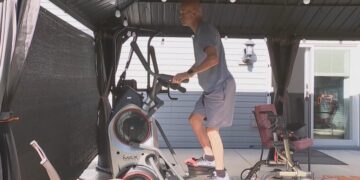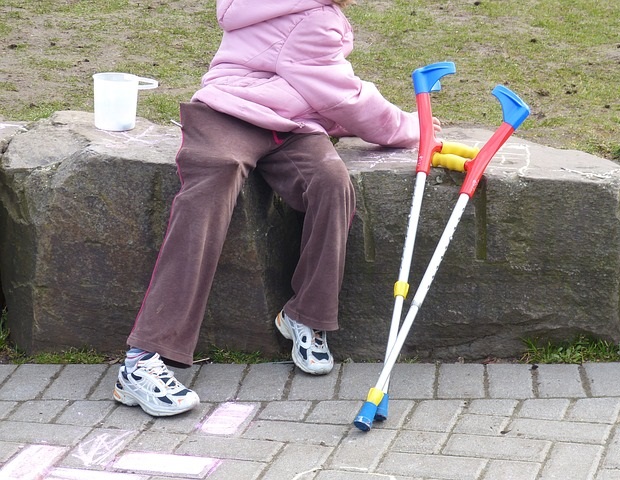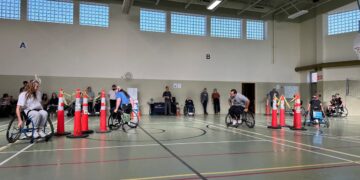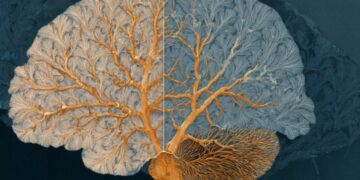Summary: Researchers have shown that adaptive music systems that adjust tempo and rhythm to match the user’s movement can make exercise significantly more enjoyable and motivating. These personalized interactive music systems use real-time data from wearable devices to keep music aligned with the intensity of walking, cycling or lifting weights, helping users maintain pace and effort.
A systematic review of 18 studies found consistent improvements in mood, motivation, and performance when people exercised to adaptive music compared to non-adaptive tracks. The findings suggest that these technologies could significantly support long-term physical activity, an important goal in the fight against global health problems related to inactivity.
Key facts
Real-time adaptation: The tempo and rhythm of the music are instantly adjusted to adapt to the user’s movement, increasing motivation. Improved experience: Participants reported greater enjoyment and willingness to continue exercising with adaptive music. Increased performance: Faster musical tempos were linked to greater benefits in effort maintenance.
Source: University of Jyväskylä
Researchers at the University of Jyväskylä have found that personalized interactive music systems – smart technologies that adapt rhythm and tempo to users’ movements – can make exercise more enjoyable and help people stay active longer.
These systems, known as PIMS, use real-time data from wearable devices and smartphones to adjust musical characteristics such as rhythm, tempo and style to match the user’s pace, whether walking, cycling or lifting weights.
For example, when the system detects that you’re speeding, it increases the tempo of the music to match your energy, helping you stay motivated and on pace.
This new systematic review and meta-analysis is the first to examine how interactive and adaptive music can influence both exercise performance and emotional experience. Participants who exercised with adaptive music reported more positive feelings and greater motivation during their workouts; In other words, they enjoyed the exercise more.
The findings also show that faster musical tempos were associated with greater benefits, supporting the idea that combining music with movement can help maintain effort and improve performance.
“Music has always been a motivator for movement. By personalizing it in real time, we could better help people maintain their exercise routines,” says Dr. Andrew Danso, lead author from the Center of Excellence in Music, Mind, Body and Brain at the University of Jyväskylä.
The review analyzed the results of 18 studies in Europe, Asia and North America, highlighting the growing potential of adaptive music systems to make physical activity more attractive and sustainable.
The study suggests that these technologies could play a key role in encouraging people to stay active, an important step in addressing global health challenges related to physical inactivity.
Key questions answered:
A: They are smart music technologies that adjust tempo, rhythm and style in real time based on the user’s movement, using data from wearable devices and smartphones.
A: By synchronizing music with movement, they increase motivation, improve enjoyment and help people maintain physical effort for longer.
A: In 18 studies, adaptive music increased positive feelings during exercise, improved performance, and showed stronger effects at faster tempos.
About this research news on neurotechnology, music and exercise
Author: Reetta Kalliola
Source: University of Jyväskylä
Contact: Reetta Kalliola – University of Jyväskylä
Image: Image is credited to Neuroscience News.
Original research: Open access.
“Personalized interactive music systems for physical activity and exercise: an exploratory systematic review and meta-analysis” by Andrew Danso et al. JMIR Human Factors
Abstract
Personalized interactive music systems for physical activity and exercise: exploratory systematic review and meta-analysis
Background: Personalized interactive music systems (PIMS) are emerging as promising devices to improve physical activity and exercise outcomes. By leveraging real-time data and adaptive technologies, PIMS align musical characteristics, such as tempo and genre, with users’ physical activity patterns, including frequency and intensity, improving their overall experience.
Objective: This exploratory systematic review and meta-analysis evaluates the effectiveness of PIMS in the physical, psychophysical and affective domains.
Methods: Searches of 9 databases identified 18 eligible studies, of which 6 (comprising 17 intervention arms) contained sufficient data for meta-analysis. Random-effects meta-analyses and meta-regression were performed to evaluate outcomes for physical activity levels, physical exertion, ratings of perceived exertion, and affective valence.
Results: Results showed significant improvements in levels of physical activity (g = 0.49, CI 0.07 to 0.91, P = 0.02, k = 4) and affective valence (g = 1.65, CI 0.35 to 2.96, P = 0.01, k = 4), with faster musical tempo identified as a significant moderator (P = 0.03). No significant effects were observed for ratings of perceived exertion (g = 0.72, CI −0.13 to 1.58, P = 0.10, k = 3) or physical exertion (g = 0.78, CI −0.55 to 2.11, P = 0.25, k = 5).
Conclusions: The substantial heterogeneity and limited quality of studies indicate the need for more robust randomized controlled trials to establish the efficacy of PIMS in diverse populations.






_6e98296023b34dfabc133638c1ef5d32-620x480.jpg)













